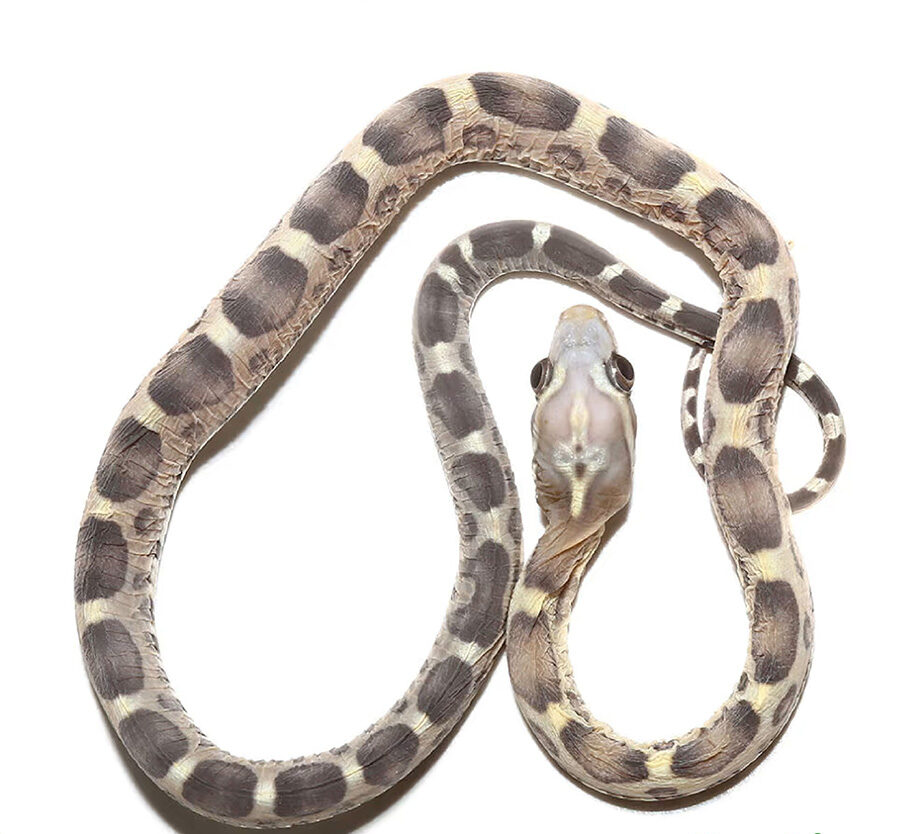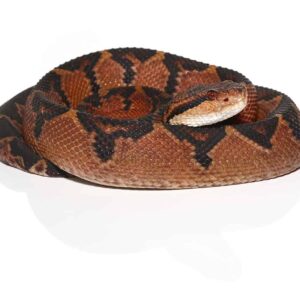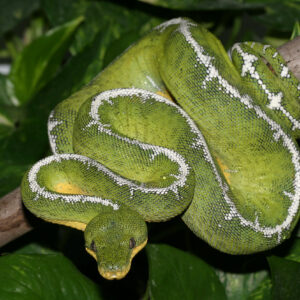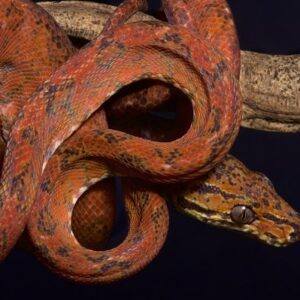Amel Palmetto Cornsnake For Sale
$324.99
Amel Palmetto Cornsnake
The Amel Palmetto Cornsnake, known for its striking appearance and docile nature, has garnered significant attention among reptile enthusiasts. A unique variant of the common cornsnake.
Description
The Amel Palmetto Cornsnake, known for its striking appearance and docile nature, has garnered significant attention among reptile enthusiasts. A unique variant of the common cornsnake, the Amel Palmetto is distinguished by its vibrant, speckled pattern and lack of melanin, giving it a distinctive look that sets it apart from other cornsnakes. This morph is characterized by a predominantly white or cream background color adorned with random splashes of red, orange, and yellow, creating a visually captivating spectacle.
Originating from North America, the cornsnake species is commonly found in the southeastern United States, thriving in a variety of habitats such as forests, fields, and even suburban areas. The Amel Palmetto Cornsnake, however, is a product of selective breeding in captivity, aimed at emphasizing its unique genetic traits. The natural habitat of cornsnakes provides a clue to their adaptability and ease of care in captivity, which are traits that have contributed to the Amel Palmetto’s popularity.
The cornsnake’s gentle temperament and manageable size make it an ideal pet for both novice and experienced reptile keepers. On average, these snakes grow to about 4-5 feet in length, with some individuals reaching up to 6 feet. Their relatively simple care requirements, combined with their striking appearance, make the Amel Palmetto Cornsnake a sought-after addition to many collections.
Understanding the origins and natural habitat of the Amel Palmetto Cornsnake provides valuable insight into its care and behavior. By replicating aspects of their natural environment and recognizing their unique characteristics, keepers can ensure a healthy and enriching life for these fascinating creatures. As we delve deeper into the specifics of their care, behavior, and breeding, the allure of the Amel Palmetto Cornsnake becomes even more apparent.
Understanding the Amelanistic Trait
The amelanistic trait, often referred to as “amel,” is a genetic mutation that significantly impacts the coloration and pattern of the Amel Palmetto Cornsnake. At its core, amelanism is characterized by the absence of melanin, the pigment responsible for dark coloration in reptiles. This genetic anomaly is a result of a recessive gene, meaning that both parent snakes must carry the gene for their offspring to exhibit this trait.
The lack of melanin in amelanistic cornsnakes leads to a striking and vibrant appearance. Instead of the typical dark and earthy tones found in wild-type cornsnakes, Amel Palmetto Cornsnakes showcase a palette of vivid reds, oranges, and whites. The absence of melanin allows other pigments, such as carotenoids and pteridines, to dominate, creating a visually stunning snake. This trait not only affects the snake’s base color but also its pattern. Traditional cornsnake patterns, like saddles and belly checkers, become more pronounced and can appear almost translucent in some cases.
From a genetic standpoint, the amelanistic trait is a fascinating example of how specific mutations can lead to significant phenotypic changes. The gene responsible for amelanism disrupts the production of melanin by interfering with the enzyme tyrosinase, which is crucial in the melanin synthesis pathway. Without functional tyrosinase, melanocytes (the cells that produce melanin) fail to generate the dark pigment, resulting in the snake’s unique coloration.
Understanding the amelanistic trait is essential for breeders and enthusiasts who aim to propagate these beautiful reptiles. By recognizing the genetic principles underlying amelanism, they can make informed decisions regarding breeding pairs to produce offspring that exhibit the desired amelanistic phenotype. Furthermore, this knowledge contributes to a deeper appreciation of the genetic diversity and complexity within the species, highlighting the intricate interplay between genetics and physical appearance in the animal kingdom.
Physical Characteristics and Identification
The Amel Palmetto Cornsnake, widely recognized for its striking appearance, is a unique and visually appealing morph of the common Cornsnake. One of the most prominent features of this morph is its distinctive coloration. The Amel Palmetto Cornsnake exhibits a predominantly white or cream-colored body, adorned with sporadic red, orange, or yellow spots. These vibrant spots create a stunning contrast against the lighter background, making the Amel Palmetto Cornsnake easily distinguishable from other Cornsnake varieties.
In terms of size, the Amel Palmetto Cornsnake typically measures between 3 to 5 feet in length when fully grown. This size range is consistent with other Cornsnake morphs, making size alone an insufficient criterion for identification. However, the scale pattern plays a crucial role in distinguishing the Amel Palmetto Cornsnake. The scales of this morph are generally smooth and exhibit a uniform pattern, consistent with the Cornsnake species. The absence of a distinct pattern on the dorsal side and the presence of irregular spots across the body are key indicators of this morph.
To accurately identify an Amel Palmetto Cornsnake, it is essential to consider a combination of features including body coloration, spot distribution, and scale texture. Unlike other Cornsnake morphs that may display a variety of patterns and colors, the Amel Palmetto’s unique blend of white or cream base color with scattered vibrant spots is its most distinctive trait. Additionally, the eyes of the Amel Palmetto Cornsnake often have a reddish or pinkish hue, further aiding in its identification.
When comparing to other varieties, such as the Classic or Okeetee Cornsnakes, the Amel Palmetto stands out due to its lack of a defined dorsal pattern and the random distribution of its colored spots. These physical characteristics not only make the Amel Palmetto Cornsnake a fascinating subject for enthusiasts but also facilitate easier identification for breeders and hobbyists alike.
Natural Habitat and Distribution
The Amel Palmetto Cornsnake, like other Cornsnakes, is native to the southeastern United States. This region’s warm climate and diverse ecosystems provide an ideal environment for these reptiles. Cornsnakes are particularly prevalent in states such as Florida, Georgia, and South Carolina, but their range extends into parts of Louisiana, Kentucky, and Virginia. These snakes are adept at surviving in a variety of habitats, showcasing their adaptability and resilience.
In the wild, Cornsnakes prefer environments that offer ample cover and opportunities for hunting. They are often found in overgrown fields, forest edges, and abandoned buildings. These areas provide a wealth of hiding spots and an abundance of prey, such as small rodents and birds. Their ability to thrive in both rural and suburban settings has contributed to their widespread distribution.
Forests and woodlands are also common habitats for Cornsnakes. These environments offer a mix of ground cover, fallen logs, and leaf litter, which are perfect for concealment and ambush hunting. Cornsnakes are known to be excellent climbers, and they often use trees and shrubs to their advantage, both for hunting and avoiding predators. The diversity of these habitats supports a healthy population of Cornsnakes, ensuring their continued survival in the wild.
In addition to their adaptability to various terrestrial habitats, Cornsnakes are also found in agricultural areas. Farms and fields provide a steady supply of rodents, making these locations attractive hunting grounds. However, this proximity to human activity can sometimes lead to conflicts, as Cornsnakes are occasionally mistaken for venomous species and killed as a precaution.









